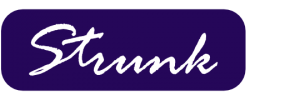Make more money with Strunk’s time tested solutions
Strunk has been working with community banks for the past 40 years with a variety of fee income and risk management tools. All of the services we provide are time tested and market proven to help with your bottom line. Now is the time to consider making more money!
When Strunk introduced their ODP program it was the best fee income idea in the history of banking. Not only can you help consumers by saving them returned check fees you can also add additional fee income to your bottom line without raising prices. Our low annual fee agreement provides state of the art collection and reporting software to ensure compliance with all regulatory laws and best practices.
Thirteen years ago we introduced Secure Checking and over 1000 banks use the service. Simply put, consumers are willing to pay for value in a checking account while the bank can still offer a no frills no fee account. Banks typically increase fee income by at least $50 per year per checking account on at least 80% of their checking account base.
We developed an enterprise risk manager solution to help community banks with regulatory required risk assessments, something many banks do on Excel spreadsheets today. The tool is pre populated with over 900 key risk indicators so each department of the bank has something to start with. Risk assessments are cumbersome and time consuming for most bankers and our solution helps you identify and quantify risks with ease.
Strunk’s Pricing Manager has provided hundreds of community banks with advanced analytics to take pricing and profitability to the next level. The fully hosted, web based solution allows FIs to deploy a tool to all lenders so that they are armed to price loans profitably based on the FI’s target profitability objectives.
Strunk’s employees have helped thousands of community financial institutions. Contact Strunk at 800.728.3116 or email at info@strunkaccess.com to set up a web demo of any of our services.


